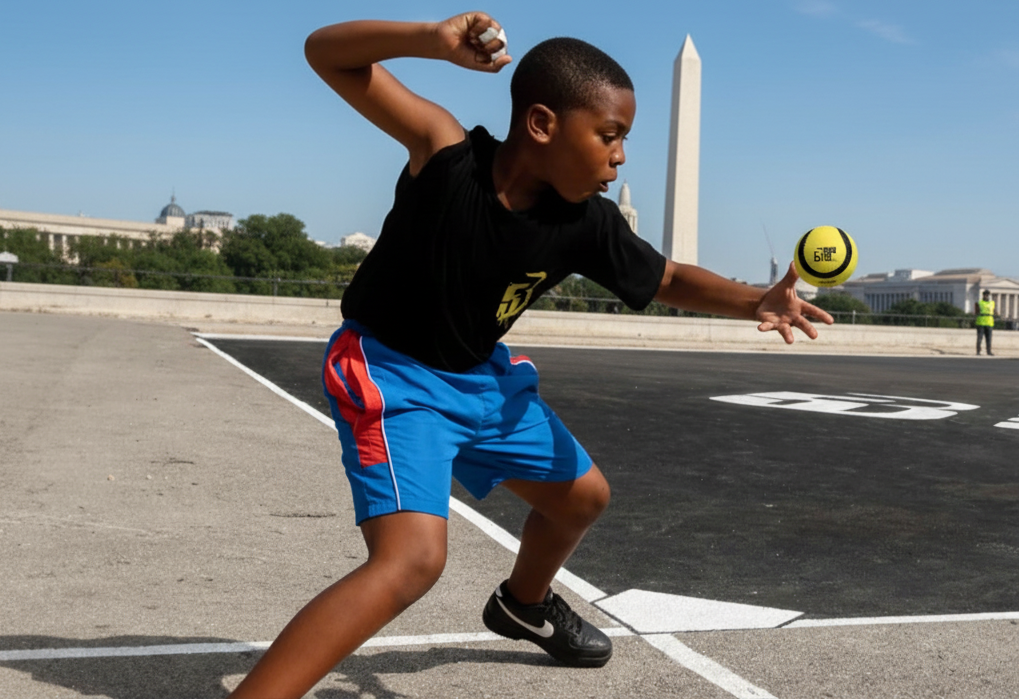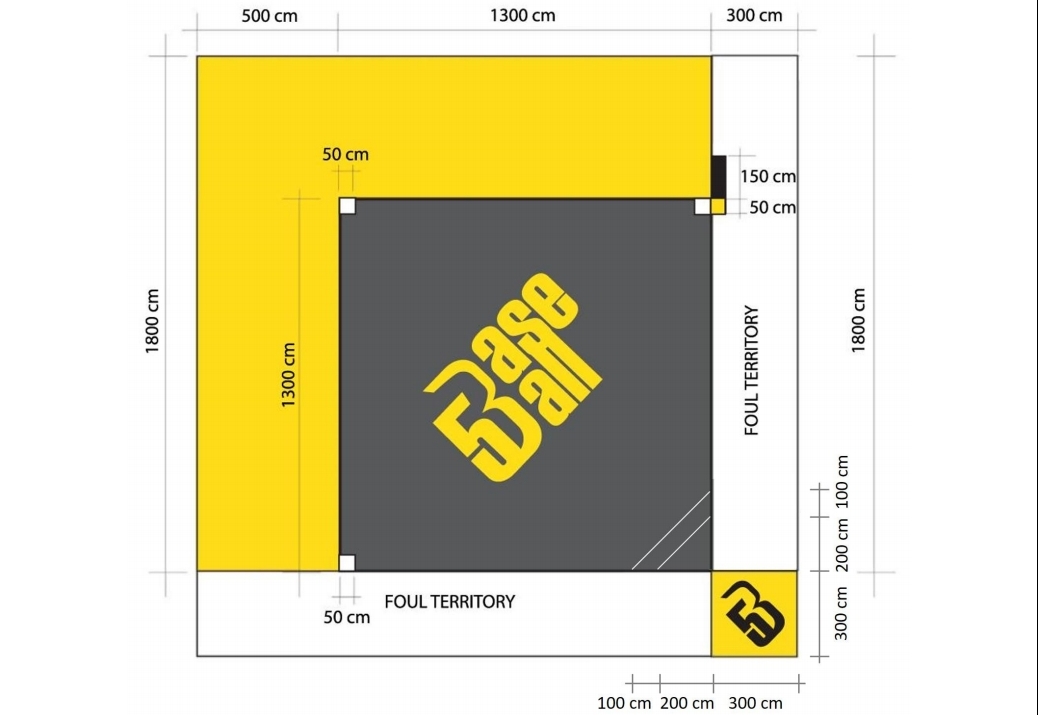Baseball5, Sport Development
Baseball5 Rules Guide: Complete Guide to Playing Baseball5 in 2024
Welcome to Baseball5: The Future of Urban Baseball
Baseball5 is revolutionizing how we play America’s pastime. Officially recognized by the World Baseball Softball Confederation (WBSC), this dynamic sport strips baseball down to its essence while making it accessible to everyone. Whether you’re in McLean, Virginia, or anywhere in the DMV, understanding the rules of Baseball5 is your first step to joining this global movement powered by Baseball5Nation.com.

The Basic Framework: 5-5-5 Rule
Baseball5 is built on a simple framework that makes it easy to remember:
- 5 players per team on the field
- 5 innings per game
- 5 bases including home plate
This elegant simplicity makes Baseball5 perfect for quick games, tournaments, and year-round play in the DMV area.
The Playing Field
Field Dimensions
- Overall size: 18 meters x 13 meters (approximately 59 x 43 feet)
- Base distance: 13 meters between bases
- Home plate: Circular, 50cm diameter
- Other bases: 70cm squares
- Pitching line: 11 meters from home plate

What You Need
The beauty of Baseball5? Minimal equipment requirements:
- One rubber ball (official Baseball5 ball or equivalent)
- Flat surface (parking lot, gym floor, playground, street)
- Base markers (can be cones, chalk, or official bases)
- Athletic shoes (no cleats required)
For more details on equipment, check our Equipment Guide.
Team Composition Rules
The Co-Ed Requirement
One of Baseball5’s most revolutionary rules: every team must be co-ed.
- Teams must have players of both genders
- Minimum 2 players of each gender on the field
- Promotes inclusion and equality
- Creates diverse, dynamic team chemistry
Roster Requirements
- 5 players on field (no more, no less)
- No substitutions during innings (except injury)
- All players bat in continuous rotation
- All players field – no designated hitters or bench warmers
Batting Rules: No Bat Required!
The Self-Hit
This is where Baseball5 gets unique. There’s no pitcher, no bat – just you and the ball:
- Player bounces ball in front of home plate
- Ball must bounce at least once
- Player strikes ball with their hand after bounce
- Ball must travel forward into fair territory

Strike Zone and Strikes
A strike occurs when:
- Player misses the ball completely after bounce
- Ball is hit foul (outside designated fair territory lines)
- Ball doesn’t bounce before being struck
- Player steps on or over home plate while hitting
Three strikes = OUT (just like traditional baseball)
Fair vs. Foul Territory
- Fair territory: Between the two foul lines extending from home plate
- Foul ball: Counts as a strike (except on third strike)
- Caught foul ball: Batter is OUT
- Third strike foul: Batter gets another chance (ball must be hit fair)
Baserunning Rules
Running the Bases
- Must touch all bases in order (1st, 2nd, 3rd, home)
- Can advance multiple bases on a single hit
- No leading off – must wait until ball is hit
- No stealing bases while ball is in play
- Must stay in baseline (within 1 meter of direct line between bases)
Tagging Up
After a fly ball is caught:
- Runner must return to base they occupied when ball was hit
- Runner can advance after fielder catches the ball
- Fielder must tag base before runner returns for force out
Fielding and Outs
Ways to Get an Out
1. Caught Fly Ball
- Any ball caught in the air before touching ground = automatic OUT
- Applies to fair or foul territory
2. Force Out
- Fielder with ball touches base before runner reaches it
- Only applies when runner is forced to advance to that base
3. Tag Out
- Fielder tags runner with ball while runner is off base
- Must be controlled contact with ball in hand
4. Three Strikes
- Batter gets three strikes (missed swings or fouls)
5. Interference
- Runner interferes with fielder attempting to field ball
- Runner runs outside baseline to avoid tag
No Gloves Rule
This is crucial: NO GLOVES are allowed in Baseball5.
- All catches must be made with bare hands
- Develops superior hand-eye coordination
- Keeps equipment costs minimal
- Levels the playing field for all participants
Scoring Rules
How to Score
- A run scores when a player touches home plate safely
- Must have touched all bases in order (1st, 2nd, 3rd, home)
- Run counts immediately upon touching home
Inning Structure
- 5 innings total (not 9 like traditional baseball)
- Each team bats once per inning
- 3 outs ends the half-inning
- Team with most runs after 5 innings wins
Tied Games
If score is tied after 5 innings:
- Extra innings are played
- Continue until one team has more runs at end of complete inning
- Tournament play may have tiebreaker rules (check specific tournament regulations)
Game Duration and Pace
One of Baseball5’s biggest advantages: SPEED.
- Average game length: 15-20 minutes
- No timeouts (except injury)
- Continuous action – no waiting for pitcher
- Quick transitions between innings
This makes Baseball5 perfect for:
- PE classes in McLean schools
- Lunch break games
- Tournament formats with multiple games per day
- After-work recreational leagues
Special Rules and Situations
Ball Out of Play
Ball is out of play when it:
- Goes beyond designated field boundaries
- Enters spectator area
- Becomes unplayable (stuck, damaged, etc.)
Result: All runners advance one base from their position when ball left field of play.
Injury Substitution
- Only injury allows mid-inning substitution
- Substitute enters batting order in same position
- Injured player cannot return to that game
- If no substitute available, team plays with 4 players (game continues)
Weather Conditions
- Indoor play eliminates weather concerns (perfect for DMV winters!)
- Outdoor play continues in light rain
- Lightning, severe weather: Game suspended
- If 3+ innings completed, game counts as official
Positions and Strategy
The Five Positions
Unlike traditional baseball’s 9 positions, Baseball5 has 5 key defensive spots:
1. First Base (1B)
- Covers first base area
- Receives throws for force outs
- Quick reflexes essential
2. Second Base (2B)
- Middle infield position
- Must cover large area
- Speed and agility critical
3. Third Base (3B)
- Covers third base and left side
- Needs strong throwing arm
- Quick reaction time for hard-hit balls
4. Shortstop (SS)
- Covers area between 2nd and 3rd
- Often the most athletic player
- Requires range and arm strength
5. Outfielder (OF)
- Covers entire outfield area
- Must read ball trajectory quickly
- Speed and catching ability crucial
Strategic Tips
Defensive Strategy:
- Position players based on batter tendencies
- Communicate constantly (no time for confusion!)
- Anticipate where ball will be hit
- Back up teammates on every play
Offensive Strategy:
- Hit to open spaces between fielders
- Use different hitting techniques (slaps, power hits, placement)
- Smart baserunning – take extra bases when possible
- Aggressive but calculated risk-taking
Common Rule Violations and Penalties
Batting Violations
- Hitting before bounce: Strike
- Stepping on/over home plate: Strike
- Ball doesn’t bounce at least once: Strike
- Using equipment (bat, stick, etc.): Automatic out + warning
Baserunning Violations
- Leaving base before hit: Runner out
- Running outside baseline: Runner out
- Missing base: Runner out (when appealed)
- Interference with fielder: Runner out
Fielding Violations
- Using gloves: Batter safe + warning
- Obstruction of runner: Runner advances one base
- Throwing gloves at ball: Runner advances two bases
Differences from Traditional Baseball
For those familiar with traditional baseball, here are the key differences:
| Element | Traditional Baseball | Baseball5 |
| Players per team | 9 on field | 5 on field |
| Innings | 9 innings | 5 innings |
| Equipment | Bat, glove, ball | Ball only (bare hands) |
| Pitching | Pitcher throws to batter | Self-hit (bounce and strike) |
| Field size | Large diamond | 18m x 13m |
| Game length | 2-3 hours | 15-20 minutes |
| Gender requirement | Not required | Must be co-ed |
| Substitutions | Unlimited | Injury only |
Learning Resources
Want to master Baseball5? Here are your next steps:
- Baseball5Nation.com – Join leagues and tournaments in the DMV
- Benefits for Youth Athletes – Why Baseball5 is perfect for young players
- Getting Started in the DMV – How to play in McLean, DC, Maryland, and Virginia
- Equipment Guide – What you need to start playing
Frequently Asked Questions
Can you steal bases in Baseball5?
No. Runners cannot leave their base until the ball is hit. There is no stealing in Baseball5.
What happens if the ball hits a runner?
If a batted ball hits a runner who is off base and in fair territory, the runner is out. The ball is dead and no other runners can advance.
Can you slide into bases?
Yes, sliding is allowed and encouraged! It’s often the best way to avoid tags and reach bases safely.
What if I can’t field with 5 players?
If you lose a player to injury and have no substitute, you can continue with 4 players. The missing spot in batting order is an automatic out.
Are there umpires?
In organized leagues and tournaments, yes. One umpire typically manages the game. In casual play, teams often self-officiate.
Ready to Play?
Now that you understand the rules, it’s time to get on the field! Baseball5 is easy to learn but offers endless strategic depth. Whether you’re playing in a McLean parking lot, a Virginia gym, or a DC playground, these rules will guide you to Baseball5 success.
Baseball5Nation.com is actively building the Baseball5 community across the DMV. Join a league, attend a clinic, or gather friends for a pickup game. The rules are simple, the action is fast, and the fun is guaranteed.
See you on the court!
Related Resources:
- Baseball5 is Coming to McLean
- Benefits for Youth Athletes
- Getting Started in the DMV
- Equipment Guide



